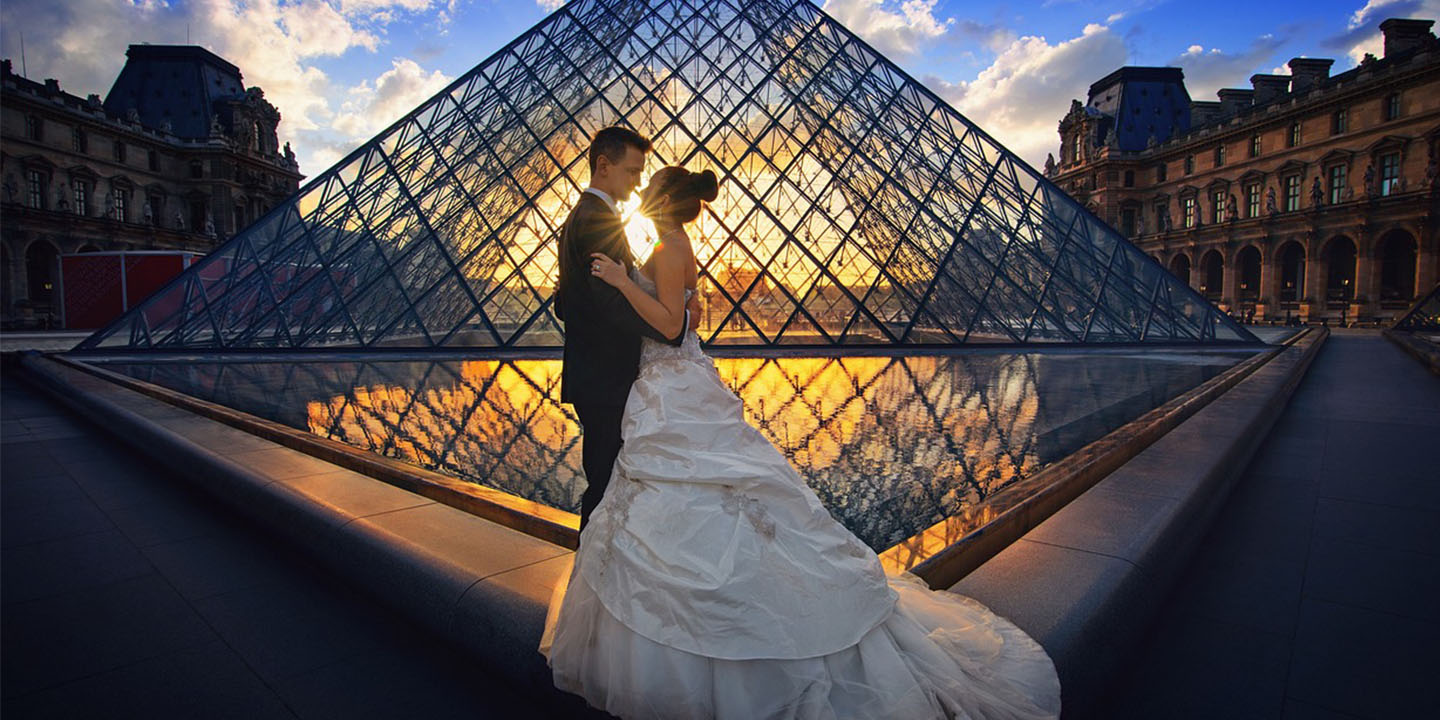Wonderfully Weird Marriages
Wedding celebrations are joyful, moving, and deeply symbolic—but in some cultures, they’re also downright bizarre. These long-standing rituals defy modern expectations, drawing from centuries of tradition and belief, delivering an experience like none you've ever seen before. Here are some of the most unusual and fascinating wedding customs still practiced around the world.
1. Scotland: The Blackening Of The Bride
Scottish brides (and sometimes grooms) are doused in a revolting mixture of soot, feathers, spoiled milk, and flour by friends. It’s meant to prepare them for any future hardship in marriage. The messiest part often takes place in full public view.
 Covering Bride with Tar and Feathers in Scotland | Blackening Of The Bride by Savage Eagle
Covering Bride with Tar and Feathers in Scotland | Blackening Of The Bride by Savage Eagle
2. China: Crying Ritual Of The Tujia People
Among the Tujia in China, brides must cry for an hour a day for a month before the wedding. Ten days in, her mother joins. Later, grandmothers and sisters join, too. This orchestrated weeping is supposedly an expression of gratitude.
3. Congo: No Smiling Allowed
Throughout the event, both the bride and the groom must refrain from smiling. If they crack a grin, it’s taken as a sign they’re not truly committed. Even wedding photos are taken with solemn expressions, no matter how festive the surroundings.
4. India: Marrying A Tree First
In parts of India, women born under the astrological condition called ‘manglik dosha’ are believed to bring bad luck to their future spouses. To counter this, they first symbolically need to marry a tree, often a banana. The tree is then cut down to “break the curse.”
 Why Some Indians Marry Trees! by Tungsten Mercury
Why Some Indians Marry Trees! by Tungsten Mercury
5. South Korea: Beating The Groom’s Feet
Some South Korean grooms endure a painful but playful test after the ceremony. Friends and relatives tie his ankles together and beat the soles of his feet with dried fish or sticks. The activity is meant to prove his strength and character.
6. Germany: Smashing Dishes In 'Polterabend'
On the eve of a German wedding, guests gather to smash porcelain and ceramic items. The couple must then clean up everything, symbolizing unity in facing life’s messes. Glass is strictly forbidden, as breaking it during the occasion is believed to bring bad luck.
 German's Wedding Tradition of Breaking Plates - Polterabend by Savage Eagle
German's Wedding Tradition of Breaking Plates - Polterabend by Savage Eagle
7. Kenya: Father Spits On The Bride
A Maasai bride’s father spits on her head and chest as a blessing. Far from being offensive, spitting is considered a way to ward off bad spirits. Afterward, the bride walks away without looking back to avoid turning her good fortune.
 Eco Africa: Traditional Maasai Wedding in Kenya by CGTN Africa
Eco Africa: Traditional Maasai Wedding in Kenya by CGTN Africa
8. Indonesia: Brides Bathed In Flower Water By Elders
In traditional Javanese, the bride undergoes a ritual bath called ‘siraman,’ where her elder relatives pour water infused with flower petals over her. This cleansing symbolizes purification before entering married life. It’s often public and emotional, with family members taking turns and reciting prayers.
 Siraman : A Sacred Ceremony by Alter Rose
Siraman : A Sacred Ceremony by Alter Rose
9. Sweden: Kissing Free-For-All
Swedish wedding guests don’t hold back on affection. If the groom goes outside, male guests line up to kiss the bride. If the bride steps out, female guests do the same to the groom. This playful part of the celebration rarely offends.
 The Swedish Kiss Game: A Fun Wedding Tradition You’ve Never Seen Before! by motivix
The Swedish Kiss Game: A Fun Wedding Tradition You’ve Never Seen Before! by motivix
10. Romania: Kidnapping The Bride
It's not uncommon in Romania for friends or family to "kidnap" the bride before the reception begins. The groom must then negotiate her return, often with jokes, drinks, or public declarations of love. This humorously tests the groom’s willingness to “win her back.”
 Kidnapping the bride Romanian wedding tradition by Alexandru Popescu
Kidnapping the bride Romanian wedding tradition by Alexandru Popescu
11. Greece: Shaving The Groom
A groom’s best man in Greece takes on the intimate task of shaving his face on the wedding day. It’s an act that symbolizes trust and brotherhood. Afterward, close family members feed him honey and almonds—traditional foods believed to ensure a sweet and fruitful marriage.
 Dressing and Shaving the Groom - Greek Style by ANGELO KASKA
Dressing and Shaving the Groom - Greek Style by ANGELO KASKA
12. India: Stealing The Groom’s Shoes
In North Indian weddings, the bride’s female relatives steal the groom’s shoes when he enters the ceremony. He must then bargain or bribe to get them back. This tradition, called ‘Joota Chupai,’ is lighthearted but fiercely competitive, and can end in hefty payouts.
 Bride side trying to steal Groom's shoe indian wedding so fun by KORO FILMS
Bride side trying to steal Groom's shoe indian wedding so fun by KORO FILMS
13. Mongolia: Chicken Liver Fortune-Telling
Mongolian couples looking to set a wedding date must first slaughter a baby chicken together. They examine its liver, and if it's healthy, they proceed with planning. If not, they keep repeating the ritual until they find one with the “right” liver.
14. Czech Republic: Baby On The Bed
Czech families or friends place an infant on the couple’s bed before the wedding. This symbolic act is believed to boost fertility and bless the marriage with children. Sometimes, grains or rice are also sprinkled around the bed to ensure abundance.
15. South Sudan: Dowry Paid In Cattle
Among the Dinka people of South Sudan, the groom first pays a dowry, often in dozens of cattle. The number depends on the bride’s family status. It’s a transaction that cements social ties and can take years to complete, long after the ceremony itself.
16. Japan: San-San-Kudo Sake Ceremony
Rather than exchanging rings, traditional Japanese Shinto weddings include san-san-kudo, or “three-three-nine times.” The bride and groom take three sips each from three sake cups. The ritual binds the couple and their families and is considered more sacred than any spoken vow.
 Sansankudo Ceremony of Steven & Tirza by qrwedding invitation
Sansankudo Ceremony of Steven & Tirza by qrwedding invitation
17. Nigeria: Public Dance For Cash
Among the Yorubas of Nigeria, guests shower the bride and groom with money during a high-energy dance. Called the ‘money spray,’ this gesture is both celebratory and supportive, helping the couple start their new life. Bills are often pinned to clothing or tossed mid-dancefloor to cheering crowds.
18. Italy: Tying Knots In Lingerie
In rural Italian regions, it’s customary to give the bride and groom a knotted bedsheet or lingerie item. The knots symbolize unity and enduring connection. Occasionally, the bride's undergarments are paraded or even auctioned at the reception as part of a cheeky fundraiser for the honeymoon.
19. Fiji: Presenting A Whale’s Tooth
A Fijian man seeking a woman’s hand in marriage must present her father with a tabua—a whale’s tooth. This rare and sacred item symbolizes deep respect and serious intent. The exchange is central to traditional Fijian custom and often marks the formal beginning of marriage negotiations.
 Presenting The whales tooth (TABUA) Fijian custom by BVK tv
Presenting The whales tooth (TABUA) Fijian custom by BVK tv
20. Norway: Bride Wears A Crown With Bells
Norwegian brides often wear ornate silver or gold crowns adorned with tiny dangling bells. As the bride walks, the bells chime softly, believed to drive away evil spirits and guard the couple’s happiness. These crowns are typically family heirlooms and can weigh several pounds depending on the design.
 Glimpses of Norway - A Hardanger Rural Wedding by Norsk Folkemuseum
Glimpses of Norway - A Hardanger Rural Wedding by Norsk Folkemuseum
















